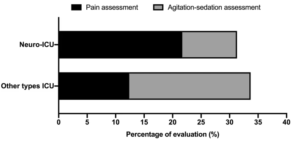
BMC Public Health
Associations between occupation and heavy alcohol consumption in UK adults aged 40–69 years: a cross-sectional study using the UK Biobank
 Alcohol consumption and its associated consequences, including cancers and heart disease, remain to be a major public health challenge. Investigating the factors that contribute to alcohol consumption can help determine where to target intervention resources.
Alcohol consumption and its associated consequences, including cancers and heart disease, remain to be a major public health challenge. Investigating the factors that contribute to alcohol consumption can help determine where to target intervention resources.
The authors found strong associations between occupations and heavy alcohol consumption
Researchers from the University of Liverpool, Thompson and Pirmohamed, investigated the association between occupation and heavy alcohol consumption in working individuals aged 40-69 years in the UK. Thompson and Pirmohamed used the UK Biobank to recruit participants.
The authors found strong associations between occupations and heavy alcohol consumption, with jobs identified as skilled trades the most likely to be associated with heavy alcohol consumption. The largest ratios for heavy drinkers were observed for publicans and managers of licensed premises, industrial cleaning process occupations, and plasterers. Whereas clergy, physicists, geologists and meteorologists and medical practitioners were least likely to be heavy drinkers. The authors findings help to determine which employment sectors may benefit most from health promotion programs.
BMC Anesthesiology
A gap existed between physicians’ perceptions and performance of pain, agitation-sedation and delirium assessments in Chinese intensive care units
This highlights the need for prompt quality improvement
Pain, agitation-sedation and delirium (PAD) management are key elements in the care of critically ill patients. However, previous research has highlighted the gap between actual clinical practices and physicians’ attitudes to PAD management. Zhou et al. investigated the current practice of PAD assessments in Chinese ICUs by a one-day point prevalence study combined with an on-site questionnaire survey.

The authors concluded that the actual PAD assessment rate was suboptimal, especially with regards to delirium screening. There was a significant gap between the actual practice and the physicians’ perception of the practice. Physicians reported performing assessing pain and agitation-sedation in approximately only 20 to 25% of patients which is lower than previous reports. Therefore, the study highlights the need for prompt quality improvement and the optimization of practices of PAD management in ICUs in China.
BMC Gastroenterology
Impact of improvement of sleep disturbance on symptoms and quality of life in patients with functional dyspepsia
Many patients with functional gastrointestinal disorders have sleep disturbance and this impacts their quality of life. However, it is not yet fully understood how sleep disturbance affects the pathophysiology of functional dyspepsia (FD). Kuribayashi et al. carried out a prospective study on 20 patients to investigate the relationship between FD and sleep disturbance. Patients took sleep aids for 4 weeks and filled out questionnaires before and after taking sleep aids.
Sleep disturbance was significantly improved by 4-week administration of sleep aids
The authors found that sleep disturbance was significantly improved by 4-week administration of sleep aids and as a result, GI symptoms, anxiety, and quality of life in patients with FD were also improved. In addition, the authors concluded that the use of sleep-inducing drugs was associated with reduced pain as well as improvement of dyspeptic symptoms in FD patients. Overall the study highlights the potential benefits of sleep aids for patients with FD and sleep disturbance, although multicenter studies involving a larger number of cases are needed to further investigate.
BMC Research Notes
Trunk and lower limb muscularity in sprinters: what are the specific muscles for superior sprint performance?
 Previous research has reported that many muscles of the trunk and lower limb were greater in sprinters than in non-sprinters. However, the specific muscles that contribute to superior sprint performance for sprinters have not been fully identified. Suga et al. examined the relationships between the trunk and lower limb muscle cross-sectional areas and sprint performance in well-trained male sprinters.
Previous research has reported that many muscles of the trunk and lower limb were greater in sprinters than in non-sprinters. However, the specific muscles that contribute to superior sprint performance for sprinters have not been fully identified. Suga et al. examined the relationships between the trunk and lower limb muscle cross-sectional areas and sprint performance in well-trained male sprinters.
Their findings showed that larger absolute and relative cross-sectional areas of the psoas major and gluteus maximus correlated with better personal best 100m sprint times. Therefore, the psoas major and gluteus maximus may be specific muscles for superior sprint performance for sprinters. The study also corroborates previous studies suggesting that the hamstring may not be an important muscle for achieving superior sprint performance.
BMC Women’s Health
Alleviating psychological distress associated with a positive cervical cancer screening result: a randomized control trial
Cervical cancer is the fourth most common cancer among women globally and cytology-based (Pap smear) screening is important for early detection and treatment. Although cervical cancer screening is beneficial and can enable early detection, a positive screening result might cause psychological burden. As a result, this may influence the decision to undergo further examination and future screening for cervical cancer.
Psychological distress appeared to be higher in the control group
Isaka et al. carried out a randomized control trial in Japan, with the intervention being the provision of cervical cancer information and cervical cancer screening information through a leaflet. The authors aim was to evaluate whether the leaflet would help reduce psychological distress. Women who were about to undergo cervical cancer screening received hypothetical screening results either with or without a leaflet, at random. Following the intervention, psychological distress appeared to be higher in the control group than in the intervention group among those who received a hypothetical positive screening result. Therefore, the authors concluded that information provision might help reduce psychological distress and recommend that cervical cancer screening programs provide participants with all relevant information.
Comments